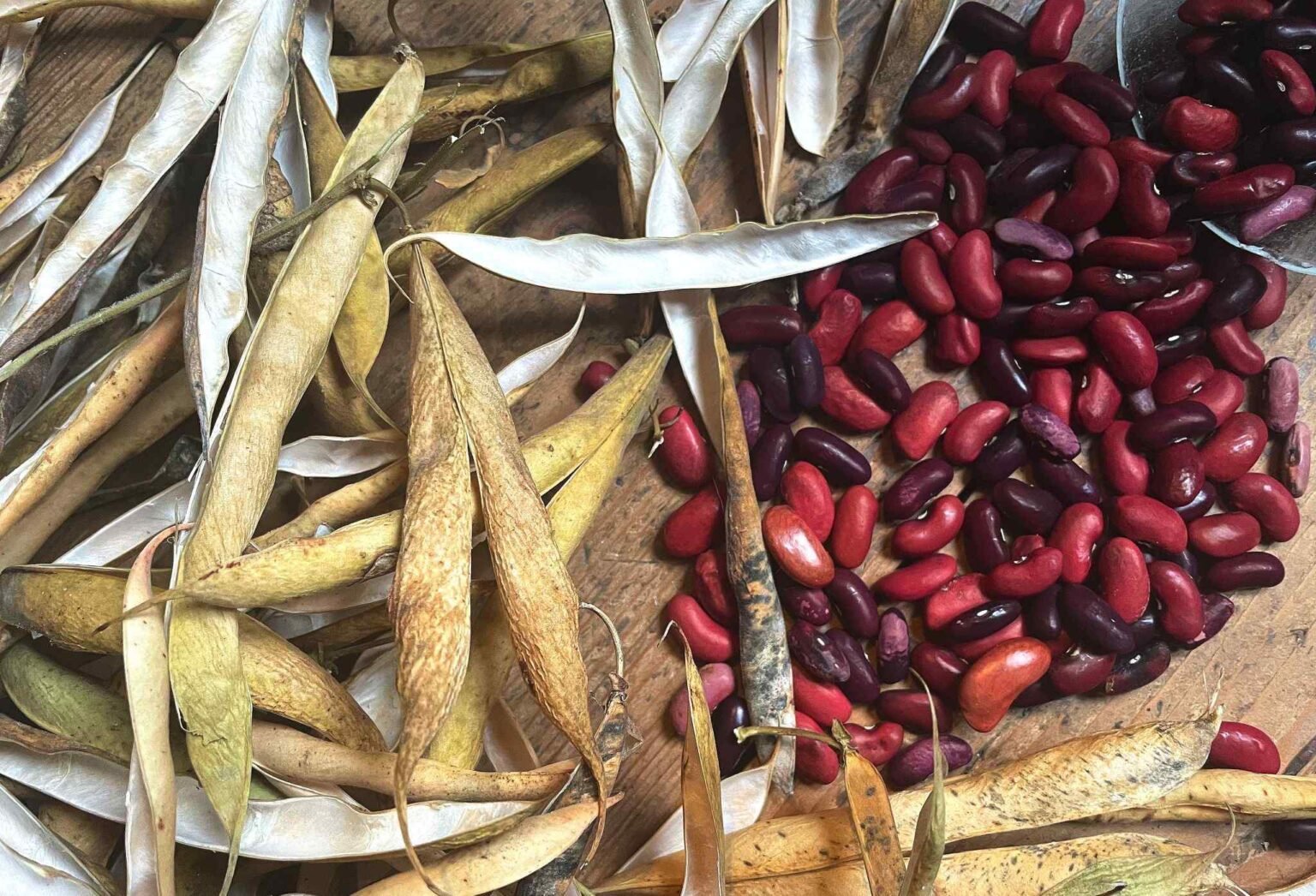Red beans and kidney beans – they might look alike, but don’t let that fool you. These two legumes have their own unique personalities when it comes to nutrition and taste.
I’ve spent countless hours in the kitchen experimenting with both, and I’ve discovered some key differences that every home cook should know. Ready to find out what sets these beans apart?
Appearance and Physical Characteristics

Red beans and kidney beans differ in shape, size, and color, presenting unique identifiers.
Red beans, smaller and rounder, have a smooth, reddish-brown skin. Their size is comparable to that of a pea, and they are known for their uniform color.
Kidney beans, on the other hand, are larger with a curved shape reminiscent of a human kidney. Their skin is darker and more robust in color, usually a deep red or mahogany. You can distinguish them by their glossy appearance and the characteristic indentation along one side.
| Red Beans | Kidney Beans |
|---|---|
| Small, round | Larger, kidney-shaped |
| Reddish-brown color | Deep red to mahogany color |
| Smooth texture | Glossy texture |
Cooking transforms their texture, but raw, each has a firm feel to them. The skin of a kidney bean is thicker, leading to a slightly different textural experience after cooking.
These legumes serve as staples in numerous culinary traditions. When selecting beans for your recipes, consider how these physical attributes may influence not only the aesthetics of your dish but also the texture and overall mouthfeel. Select red beans for a more delicate presentation or kidney beans for a bolder, more substantial component.
Flavor Profile and Taste Differences
Red beans and kidney beans, while similar in some aspects, exhibit distinct flavor profiles.
Red beans carry a mild sweetness and a touch of nuttiness, lending a subtle aroma to dishes. Their versatile taste makes them a favorite for recipes requiring a gentle bean flavor that complements other ingredients without overwhelming them.
Kidney beans, on the other hand, present a bolder taste. They possess a mildly sweet yet discernible earthy quality coupled with a hint of bitterness. Their natural flavors are more pronounced and can stand out in a dish that demands a bean with character. Additionally, kidney beans offer a slightly smoky aroma, enhancing their rich presence on the palate.
| Bean Type | Flavor | Aroma |
|---|---|---|
| Red Beans | Mildly sweet, nutty | Gentle |
| Kidney Beans | Mildly sweet, earthy, | Rich, earthy, slightly smoky |
When deciding between the two for your culinary creations, consider how the bean’s flavor will interact with your other ingredients. Red beans will blend seamlessly, while kidney beans will assert their taste in a complementary fashion. Your choice can subtly influence the overall flavor dynamic of your dish.
Culinary Uses and Recipe Ideas

Red beans and kidney beans both serve as versatile ingredients in a wide array of dishes.
Red beans typically find their home in the classic Louisiana dish known as red beans and rice; their slightly sweet, softer texture compliments the smoky flavors of Cajun cuisine. The smaller red bean is also excellent in soups, stews, and dips, adding a pop of color and a heartiness to your meal.
Kidney beans, with their larger size and more substantial texture, are a staple in chili con carne. Their ability to maintain structure after cooking makes them the perfect addition to hearty meals that require longer simmer times. Also, you can toss them into a salad for added protein or mash them to form burger patties for a vegetarian twist on a classic.
Looking for some inspiration to get started in the kitchen? Try the following:
- Salads: Mix kidney beans with quinoa, fresh herbs, and a lemon vinaigrette for a protein-packed salad.
- Soups: Add red beans to a vegetable soup for a touch of sweetness and texture.
- Entrees: Stir kidney beans into a curry or stew to make the dish more filling.
- Sides: Combine red beans with rice, a squeeze of lime, and cilantro for a simple, flavorful side.
Incorporating these beans into your diet can be both delicious and nutritious. The key is to experiment with different spices and cooking methods to find what works best for your taste buds. Enjoy discovering the many ways to incorporate red and kidney beans into your favorite recipes!
Nutritional Comparison: Red Beans vs Kidney Beans
Red beans and kidney beans are both nutritious options, packed with protein, fiber, and various vitamins and minerals. However, they have subtle differences in their nutritional profiles which might influence your choice depending on your dietary needs.
Red beans offer a slightly higher iron content than kidney beans. If you’re looking to increase your iron intake, incorporating red beans into your diet could be beneficial. They are also a good source of potassium, which is essential for maintaining healthy blood pressure levels.
Kidney beans, on the other hand, are notable for their high protein content, making them an excellent choice for those looking to support muscle building and repair. They also contain antioxidants that help protect your body against free radicals, potentially reducing the risk of some chronic diseases.
| Nutrient | Red Beans (per 100g) | Kidney Beans (per 100g) |
|---|---|---|
| Calories | 127 | 127 |
| Protein | 8.7 g | 8.7 g |
| Iron | 2.1 mg | 1.6 mg |
| Potassium | 333 mg | 405 mg |
| Fiber | 6 g | 7 g |
Choose red beans for a boost in iron and potassium or opt for kidney beans for their protein and antioxidant properties. Both beans are versatile and can be added to a variety of dishes, such as salads, soups, and stews.
Remember to cook both types of beans thoroughly to ensure they are safe for consumption—kidney beans, in particular, contain a toxin that is neutralized through proper cooking. Incorporate these beans into your meals to take advantage of their healthful benefits.
Health Benefits of Red Beans and Kidney Beans

Red beans and kidney beans both contribute valuable nutrients that support your overall health. They are rich sources of protein and fiber, which help maintain muscle health and digestive regularity.
Nutritional Content:
- Protein: Vital for tissue repair and muscle growth.
- Fiber: Aids in digestive health and can assist in managing blood sugar levels.
Incorporating these beans into your diet provides essential vitamins and minerals. Kidney beans are particularly high in potassium, which is important for maintaining normal blood pressure, and red beans offer iron which is crucial for red blood cell formation.
Notable Vitamins and Minerals:
- Potassium: Key for heart health.
- Iron: Supports oxygen transport in the body.
Both beans have antioxidants that may reduce inflammation and lower the risk of chronic diseases. The fiber content in both red and kidney beans makes them beneficial for weight management by promoting a sense of fullness, which can help reduce overall calorie intake.
Health Impact:
- Antioxidants: Defend against oxidative stress.
- Heart Health: Fiber helps to manage cholesterol levels.
- Weight Management: High fiber content increases satiety.
When prepared properly, which means soaking and cooking thoroughly, red and kidney beans are safe and nutritious additions to your meals. Just be sure to cook them well to prevent any adverse effects from compounds such as lectins found in undercooked beans.
Cooking and Preparation Methods
Before cooking red beans or kidney beans, it’s essential to soak them. This step helps remove any impurities and reduces cooking time.
Soak the beans in a large bowl of water, ensuring they’re completely submerged. The process can be done overnight or by using the quicker hot soak method, where you bring the beans to a boil for a few minutes and then let them soak for an hour off the heat.
Once soaked, drain and rinse the beans before cooking. You’ll want to boil them in fresh water until tender.
Keep in mind that kidney beans contain a toxin called phytohemagglutinin, making it crucial to boil them for at least 10 minutes during the initial cooking phase. Undercooked kidney beans can be harmful, so ensure they’re fully cooked before consuming.
| Red Beans | Kidney Beans |
|---|---|
| Soak overnight | Soak overnight |
| Rinse and boil | Rinse and boil |
| Simmer until tender | Boil for 10 minutes, then simmer until tender |
For added flavor, you might consider including aromatic ingredients like onions, garlic, or herbs. Ensure that any added ingredients are introduced after the initial toxin-eliminating boil for kidney beans.
Both beans can be used interchangeably in recipes; however, their subtle flavor and texture differences could influence the outcome of your dish. When ready, these beans are a nutritious addition to salads, stews, and chili.
Accessibility and Availability

Kidney beans and red beans are staples in various cuisines around the world. Each offers a distinct texture and flavor to dishes.
Access to these beans can vary by location. Generally, both types are readily available in most grocery stores. This is due to their popularity and long shelf-life.
Kidney Beans: Known for their larger size, kidney beans are commonly found in both dried and canned forms. You can easily pick them up in the dried bean aisle or in the canned goods section of supermarkets. They are often stocked year-round, making them a reliable ingredient for your recipes.
Red Beans: Smaller and rust-colored, red beans have a slightly sweeter taste and are also available dried or canned. They may sometimes be less prominent on shelves compared to kidney beans, but are usually present in stores with a diverse inventory.
To ensure you’re purchasing the right type of bean for your cooking, look for the distinct shape and size that differentiate the two. Red beans are small and oblong, while kidney beans have a characteristic curved shape.
Both beans are often grouped with other legumes. They can generally be purchased at a similar price point, making them an affordable protein source.
If you cannot find them locally, many online retailers offer a range of both red and kidney beans. This includes organic and bulk options.
Substituting Red Beans and Kidney Beans

When you’re aiming to substitute red beans for kidney beans or vice versa in a recipe, consider the texture and flavor profile of each.
Red beans, smaller and rounder, lend a smooth and creamy texture that is ideal for traditional dishes like red beans and rice.
For more about red bean characteristics, click here.
In contrast, kidney beans have a firmer texture, and their larger, kidney-like shape holds up well in hearty recipes such as chili or salads.
If you need guidance on how kidney beans differ in cooking times, this resource can help.
Here’s a quick reference table for substituting:
| If your recipe calls for: | Consider using: | Note on substitution: |
|---|---|---|
| Red Beans | Kidney Beans | Expect a firmer texture and slight change in flavor. |
| Kidney Beans | Red Beans | Results in a creamier consistency; may cook faster. |
Keep in mind:
- Soaking is key to reducing cooking time and improving digestibility.
- Always test for doneness by tasting; beans should be tender and pleasant to eat.
- Adjust seasonings as needed, since the beans’ flavors may differ.
- Cook times can vary, so monitor the pot, especially if you’re using a pressure cooker for a quicker meal.
Are you considering substituting in soups and stews? Go ahead; both types of beans absorb flavors well over long cooking periods, with the main difference being texture. Red beans become creamy while kidney beans maintain a firmer bite.
Here’s actionable advice: When swapping, start with a 1:1 ratio and adjust according to your taste and the recipe’s need for structure or creaminess.
Always rinse your beans thoroughly regardless of the type to ensure they are ready for your dish.



